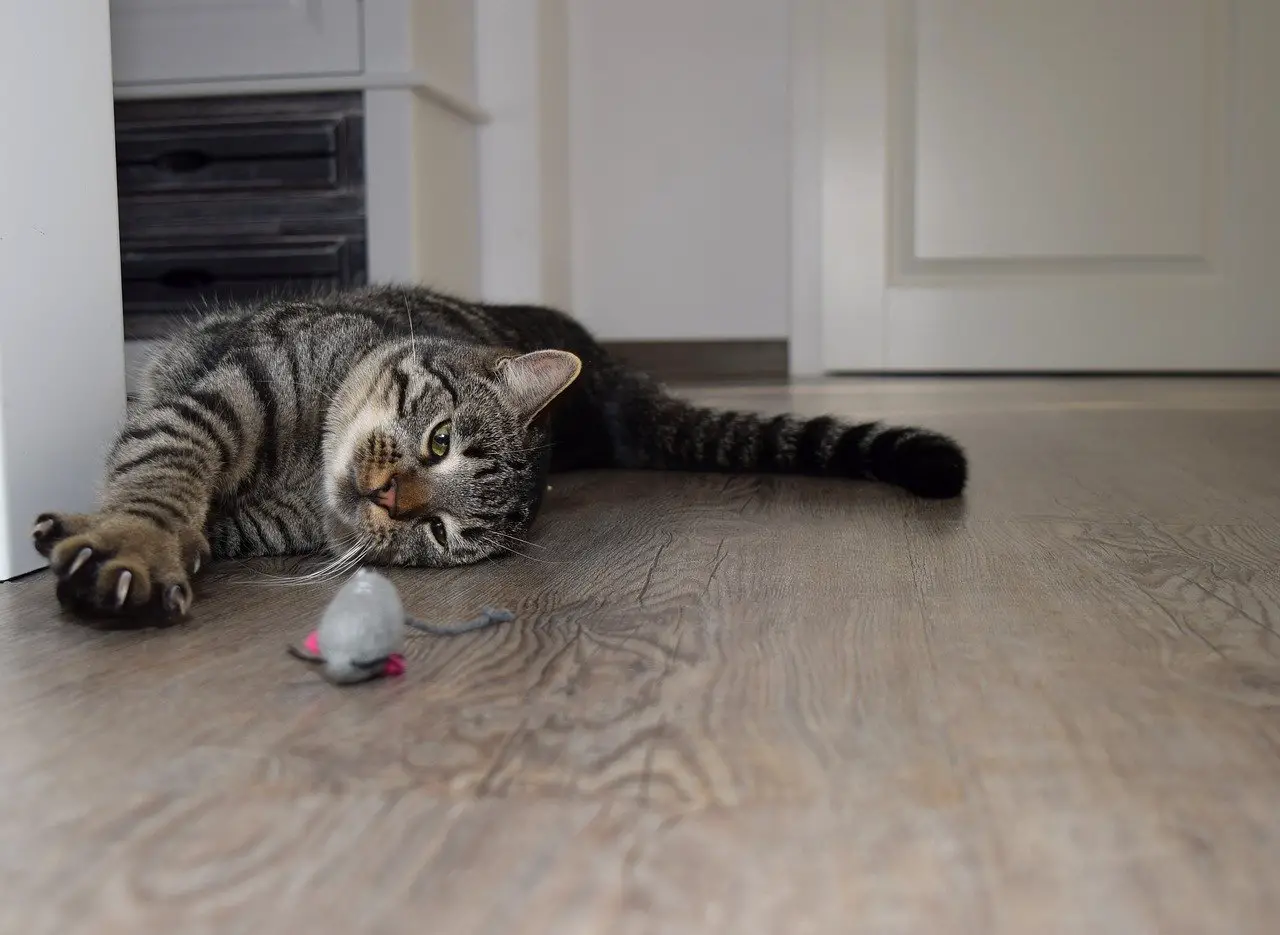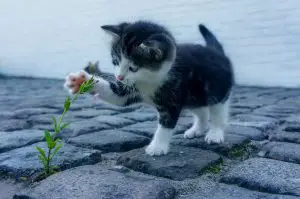Trimming Claws Of An Aggressive Cat
- Trim only the tips and avoid the quick — it’s painful for the cat when you cut it
- Prepare your cat in advance — get it accustomed to the sound of clippers and to being handled
- Trim only when the cat is distracted
- Trim while the cat is asleep
- Wrap it in a towel so it can’t attack you
- Don’t trim your cat’s claws when it’s in a bad mood
As a cat owner, you’ve read all about the benefits of trimming your cat’s claws. Finally, you make a decision to go through with it, only to discover that your cat is extremely uncooperative. Not only does it obviously dislike the process, but it makes it impossible to complete — it bites, scratches, and twists in your arms. You’re close to giving up — how on Earth should you go about trimming claws of an aggressive cat?
While the situation you’ve found yourself in is not easy, it’s not hopeless either. Keep in mind that your cat only behaves this way because it’s scared, so you’ll need to have a lot of patience with it and to prepare in advance. In this guide, I will teach you that trimming claws of an aggressive cat doesn’t have to be a bad experience. With a few tricks, it can become just another part of your and your cat’s routine.

Things to Know Before Trimming Claws of an Aggressive Cat
Trimming your cat’s claws should be painless, just like trimming your own nails. Your cat might dislike it for a host of reasons, but it shouldn’t feel threatened by it. In order to make the experience as comfortable for your cat as possible, I’d recommend you follow a few simple rules:
1. Trim Only the Tips
There is no need to cut too deeply. Just cutting the tip will render your cat’s claws much less sharp, so you won’t need to suffer painful scratches anymore. On top of that, your cat will still have functional claws.
2. Don’t Cut the Quick
The quick is a part of your cat’s claws that contains blood vessels and nerve endings. That means that cutting into it will cause pain to your kitty, and it will almost certainly attack you. Luckily, if you follow the first rule, it’s unlikely that you will cut the quick. But in case you’re wondering, the quick has a pink or reddish tinge to it, and you will find it at the base of your cat’s claws.
3. If You Cut the Quick, Apologize
Even if you are very careful, accidents happen. So make sure to stop the bleeding and apologize to your cat by giving it its favorite treats.
Preparing in Advance
Whether your cat is aggressive or not, some preparation before the first trim is in order. This will ensure that the trimming process runs smoothly and ends quickly, which both you and your cat will appreciate. Here are a few things you can do:
1. Handle Your Cat’s Paws
One of the main reasons cats protest so furiously against trimming is because they aren’t used to anyone touching their paws. In my experience, they dislike it, but they can get comfortable with it with regular practice.
Start by rubbing your cat’s paws every day for a short period of time. Don’t be pushy — if you notice that your cat is getting agitated, take a step back. But as time passes, it will let you touch it and hold it longer.
After a while, you can start pressing on its paw to extend the claw. Don’t cut yet at this stage; just press. If the cat doesn’t complain, reward it with a treat.
2. Hold Your Cat in Your Lap
The paw handling training might not be enough — I’d recommend teaching your cat to sit still in your lap. Depending on your cat’s personality, this might be either very easy or very hard. Either way, don’t pressure it or force it — cats tend to become even more stubborn when you do. Just give them treats for good behavior and your cat will start associating your lap with reward.
3. Get Your Cat Used to the Sound of Clippers
Cats rely on their hearing a lot more than you do, and the sound of clippers might make them anxious. So don’t let your cat hear it for the first time during the trimming. Instead, use the clippers in your cat’s vicinity a few times before the “official” clipping. You can do this by clipping your own nails, for example.
Trimming Claws of an Aggressive Cat — Additional Tips
Finally, the trim time has come. You’ve done all of the necessary preparations and you feel almost confident. You’re waiting for your cat to get calm and comfortable in your lap before you take its paw and trim the first claw. Then suddenly, your cat fiercely scratches you and leaps from your lap, and for the next half an hour you chase it, unsuccessfully trying to finish what you started.
Where did you go wrong? Well, nowhere really, but your cat might belong to a category that needs a few additional tricks to comply with trimming. If that is the case, don’t worry, I compiled those tricks just for you.
Trim While Your Cat Is Wrapped in a Towel
This is convenient if you want to avoid the inevitable scratching. You will have access to only one paw at a time, and your cat’s face and claws will stay well away from you. If you want to wrap your cat up safely, here is a post that teaches you how to do just that.
But I ought to warn you — some cats might become even more aggressive when wrapped in a towel. If that’s the case with yours, then it’s better not to use this technique.
Trim When Your Cat Is Sleeping
Your cat’s constant sleeping can finally come in handy. Wait for it to fall asleep before you trim its claws, and it won’t even know what happened!
However, make sure that your cat is in the phase of deep sleep; you can do this by playing with its ears or paws. If it doesn’t react, you can safely trim its claws. Be quick though, this phase doesn’t last very long and your cat might soon wake up to scratch you.
Trim When Your Cat Is Distracted
Cats are curious creatures. When they find themselves in new surroundings, they might be a little too distracted to notice what you’re doing with their claws. Use this to your advantage and take them to a part of the house they normally don’t have access to before you trim.
Another trick I found useful is putting a bit of mayonnaise on your cat’s nose while trimming — it will confuse and distract your cat enough to make it let its guard down.
Never Do It When Your Cat Is in a Bad Mood
If your cat is angry, don’t trim its claws. It’s almost certain it will hurt you and you won’t be able to get the job done. Instead, wait for it to calm down before you start and take care to handle it properly and speak gently to it. After each claw, give your cat a treat to encourage it and create positive associations with trimming.
Final Thoughts on Trimming Claws of an Aggressive Cat
Trimming the claws of an aggressive cat requires a lot of patience, preparation, and resourcefulness. Still, if your resolve wavers, remember that trimming doesn’t only benefit you, but also your cat’s well-being. Cats whose claws aren’t regularly trimmed may suffer from ingrown nails, which are rather painful. Your cat will never thank you for it, but taking care of its claws is important if you want your furry friend to stay happy.
Our Recommendation for cat nail clippers.
[su_box title=”Affiliate Disclosure”]This website is supported by its readers. Please assume that all links are affiliate links. If you make a purchase from one of the links we will make a commission from Amazon. Thank you.[/su_box]






